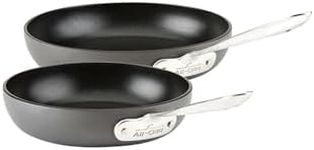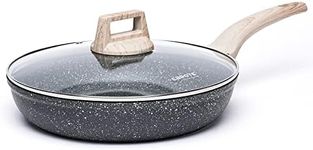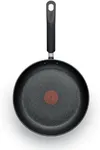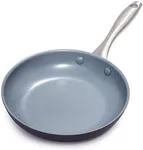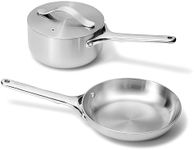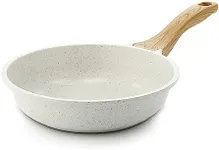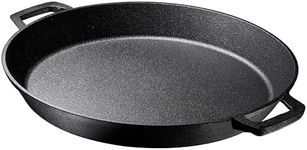Buying Guide for the Best 8 Omelette Pans
Choosing the right omelette pan can make a significant difference in your cooking experience and the quality of your omelettes. The right pan will help you cook evenly, prevent sticking, and make flipping and serving easier. When selecting an omelette pan, consider the following key specifications to ensure you get the best fit for your needs.MaterialThe material of the omelette pan affects heat distribution, durability, and ease of cleaning. Common materials include stainless steel, non-stick, cast iron, and aluminum. Stainless steel is durable and resistant to rust but may require more oil to prevent sticking. Non-stick pans are easy to clean and require less oil, making them ideal for low-fat cooking, but they can be less durable over time. Cast iron provides excellent heat retention and even cooking but is heavy and requires seasoning. Aluminum pans heat up quickly and evenly but may warp over time. Choose a material based on your cooking habits and maintenance preferences.
SizeOmelette pans come in various sizes, typically ranging from 8 to 12 inches in diameter. The size you choose depends on how many servings you usually prepare. An 8-inch pan is suitable for single servings or smaller omelettes, while a 10-inch pan is versatile for both single and double servings. A 12-inch pan is ideal for larger omelettes or multiple servings. Consider your typical portion sizes and the number of people you cook for when selecting the size.
ShapeThe shape of the pan can influence how easy it is to flip and fold your omelette. Traditional omelette pans have sloped sides, which make it easier to slide the omelette out of the pan. Some pans have a more pronounced curve, which can help with flipping. If you prefer a specific style of omelette, such as a French omelette, look for a pan with the appropriate shape to facilitate your cooking technique.
HandleThe handle of the omelette pan should be comfortable to hold and stay cool during cooking. Handles can be made from various materials, including stainless steel, silicone, and plastic. Stainless steel handles are durable and oven-safe but can get hot. Silicone and plastic handles stay cooler but may not be oven-safe. Consider the type of cooking you do and whether you need to transfer the pan to the oven when choosing a handle.
WeightThe weight of the pan affects how easy it is to handle, especially when flipping or transferring the omelette. Lighter pans are easier to maneuver but may not distribute heat as evenly. Heavier pans, such as cast iron, provide better heat retention and even cooking but can be cumbersome to handle. Choose a weight that you are comfortable with and that suits your cooking style.
CoatingThe coating of the pan, particularly non-stick coatings, can make cooking and cleaning easier. Non-stick coatings prevent food from sticking and reduce the need for oil, making them ideal for healthier cooking. However, non-stick coatings can wear off over time and may require gentle cleaning to maintain. If you prefer a non-stick surface, look for high-quality coatings that are durable and free from harmful chemicals. If you prefer a more traditional cooking surface, consider stainless steel or cast iron.
CompatibilityEnsure that the omelette pan is compatible with your stovetop. Some pans are designed for specific types of stovetops, such as induction, gas, or electric. Induction-compatible pans must have a magnetic base. Check the manufacturer's specifications to ensure the pan will work with your stovetop. Additionally, consider whether the pan is oven-safe if you plan to finish your omelettes in the oven.
